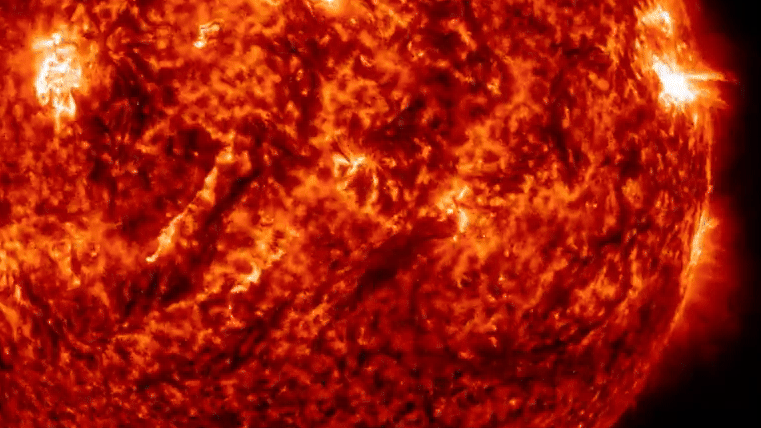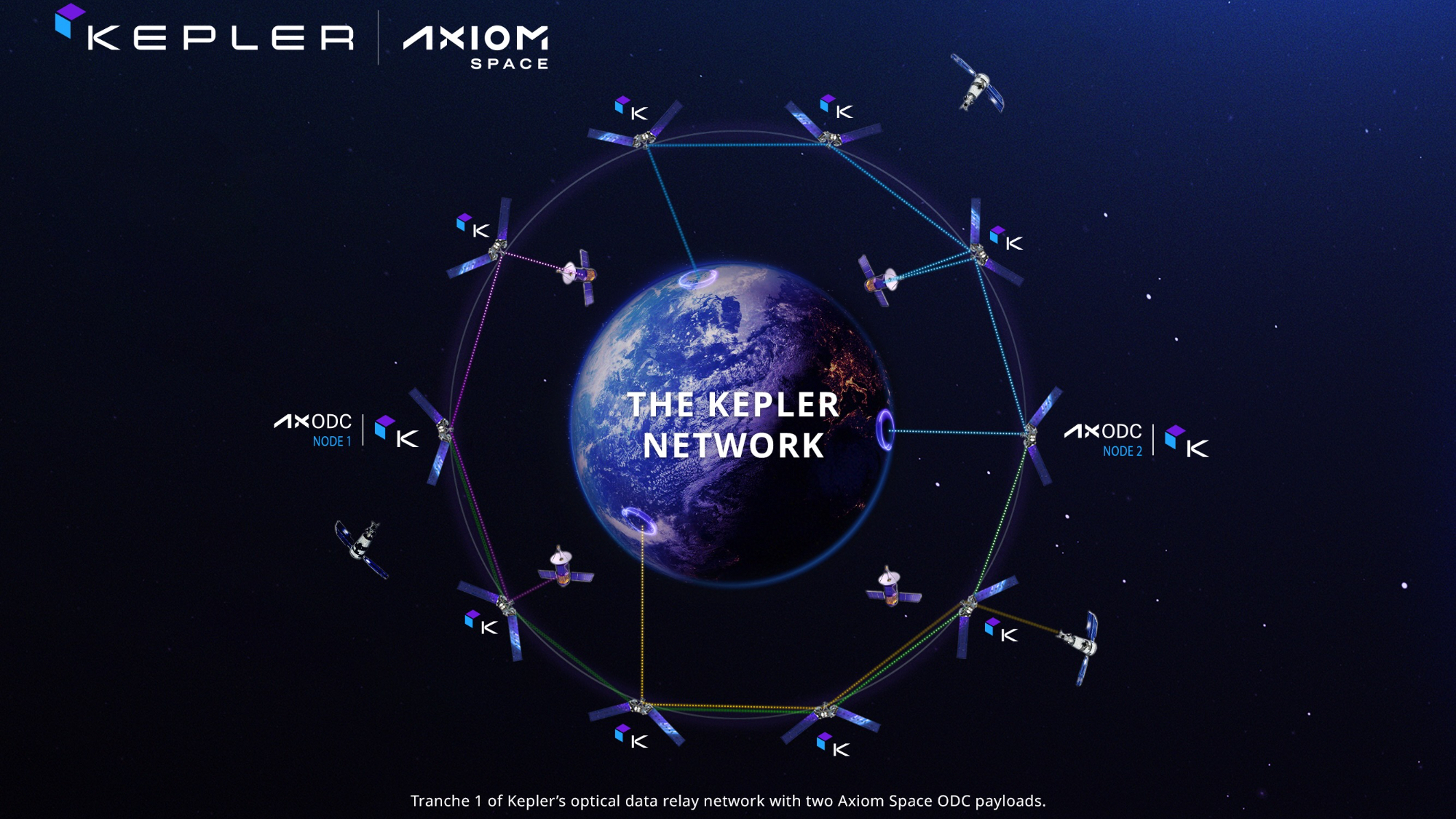This baby exoplanet is made of different stuff than its birth cloud
"For observational astrophysicists, one widely accepted picture of planet formation was likely too simplified."

Planets can differ from the swirling envelopes of gas and dust from which they are born, astronomers have found. The revelation seems to indicate that the planet formation model favored by scientists may be overly simple.
A team led by researchers from Northwestern University in Illinois made this discovery while observing a still-forming planet and the disk of natal material in which it sits.
The exoplanet at the heart of this research is PDS 70b, a gas giant with around three times the mass and width of Jupiter located 369 light-years away from us. PDS 70b orbits its star at around 20 times the distance between Earth and the sun, taking 119.2 Earth years to complete an orbit.
Just as we expect children to look like their parents, scientists have also expected planets to have similarities with the disks of matter around infant stars, called protoplanetary disks, from which they form and then sit within as they evolve.
Related: Exoplanets: Everything you need to know about the worlds beyond our solar system
"For observational astrophysicists, one widely accepted picture of planet formation was likely too simplified," team leader Chih-Chun "Dino" Hsu of Northwestern University said in a statement. "According to that simplified picture, the ratio of carbon and oxygen gases in a planet’s atmosphere should match the ratio of carbon and oxygen gases in its natal disk — assuming the planet accretes materials through gases in its disk. Instead, we found a planet with a carbon and oxygen ratio that is much lower compared to its disk.
"Now, we can confirm suspicions that the picture of planet formation was too simplified."
Get the Space.com Newsletter
Breaking space news, the latest updates on rocket launches, skywatching events and more!
Planetary children go their own way
Planets are born when the material surrounding infant stars forms a protoplanetary disk. Over the course of millions of years, bits of cold gas and dust in this disk clump together under their own gravity, forming the seeds of planets.
The investigation of this phase of planetary evolution has been hindered by the fact that, until recently, it has been impossible to get a direct view of an exoplanet within its natal envelope. Generally, by the time planets become visible, they are aged, and their envelopes have dissipated.
The system around the infant star PDS 70 is different, however. There, two planets that are estimated to be around 5 million years old, PDS 70b and PDS 70c, can be distinguished in their envelopes.
"This is a system where we see both planets still forming as well as the materials from which they formed," said study team member Jason Wang, an assistant professor of physics and astronomy at Northwestern. "Previous studies have analyzed this disk of gas to understand its composition.
"For the first time, we were able to measure the composition of the still-forming planet itself and see how similar the materials are in the planet compared to the materials in the disk."

To determine the chemical composition of the disk and of PDS 70b, the team examined the light coming from the young star system. This investigation is possible because chemical elements absorb and emit light at characteristic wavelengths. That means chemicals in atmospheres leave their "fingerprints" on starlight that passes through them.
The study team developed new technology that made visible the faint features that would otherwise be indistinguishable.
"These new tools make it possible to take really detailed spectra of faint objects next to really bright objects," Wang said. "Because the challenge here is there’s a really faint planet next to a really bright star. It’s hard to isolate the light of the planet in order to analyze its atmosphere."
From this data, the team was able to obtain information about the water and carbon monoxide around PDS 70b. With this info, they could infer the ratio of carbon and oxygen within the planet’s atmosphere. The team then compared this to the ratio of the same gases in the disk that formed the planet.
"We initially expected the carbon-to-oxygen ratio in the planet might be similar to the disk," Hsu said. "But, instead, we found the carbon, relative to oxygen, in the planet was much lower than the ratio in the disk. That was a bit surprising, and it shows that our widely accepted picture of planet formation was too simplified."

The team doesn't know exactly what caused PDS 70b to diverge from its prenatal cloud, but they have two possible explanations.
The first would see PDS 70b form before the protoplanetary disk was enriched with carbon. Alternatively, this exoplanet could have grown by gobbling up large amounts of solid materials rather than just gases.
"If the planet preferentially absorbed ice and dust, then that ice and dust would have evaporated before going into the planet," Wang said. "So, it might be telling us that we can’t just compare gas versus gas. The solid components might be making a big difference in the carbon-to-oxygen ratio."
The researchers' next step is to examine the star system PDS 70 more closely. This will include studying the planet PDS 70c, the companion of PDS 70b.
"By studying these two planets together, we can understand the system’s formation history even better," Hsu said. "But, also, this is just one system. Ideally, we need to identify more of them to better understand how planets form."
The team's research was published on Wednesday (Dec. 18) in the Astrophysical Journal Letters.
Join our Space Forums to keep talking space on the latest missions, night sky and more! And if you have a news tip, correction or comment, let us know at: community@space.com.

Robert Lea is a science journalist in the U.K. whose articles have been published in Physics World, New Scientist, Astronomy Magazine, All About Space, Newsweek and ZME Science. He also writes about science communication for Elsevier and the European Journal of Physics. Rob holds a bachelor of science degree in physics and astronomy from the U.K.’s Open University. Follow him on Twitter @sciencef1rst.
-
rod "For observational astrophysicists, one widely accepted picture of planet formation was likely too simplified," team leader Chih-Chun "Dino" Hsu of Northwestern University said in a statement. "According to that simplified picture, the ratio of carbon and oxygen gases in a planet’s atmosphere should match the ratio of carbon and oxygen gases in its natal disk — assuming the planet accretes materials through gases in its disk. Instead, we found a planet with a carbon and oxygen ratio that is much lower compared to its disk. "Now, we can confirm suspicions that the picture of planet formation was too simplified."Reply
My note. Interesting report here. Venus and Mars have largely CO2 atmospheres. PDS 70 has been in the news periodically.
Surprise! Baby exoplanets might look like Smarties candies rather than spheres, https://forums.space.com/threads/surprise-baby-exoplanets-might-look-like-smarties-candies-rather-than-spheres.65148/
JWST observations find water for the first time in the inner disk around a young star with giant planets, https://phys.org/news/2023-07-jwst-disk-young-star-giant.html









